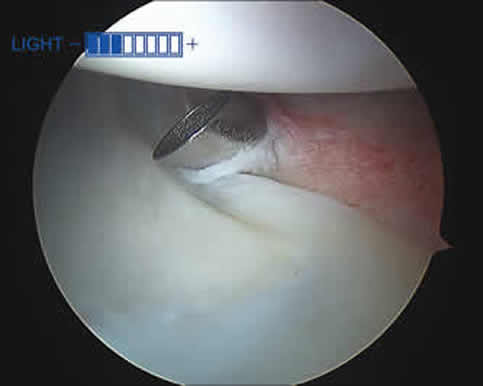
| Home |
| About Us |
| Patient Services |
| Physicians |
| XRay & MRI Review |
| News |
| Education |
| Links |
| Directions |
| Contact Us |
Hip Arthroscopy |
What Is It? Hip arthroscopy has been present for many years but has seen limited use because of technical demands. A recent interest in hip arthroscopy has emerged secondary to improved technology and understanding of hip disease. The basics of hip arthroscopy are similar to arthroscopy of other joints. A camera and light source are the basis of all arthroscopic procedures. Arthroscopy of the hip requires a way to distract the joint. This is typically performed with a special operating table. Flexible tools have been designed to improve access to problems inside the hip joint. Hip arthroscopy is significantly more difficult than arthroscopy of the shoulder or knee. Who Should Have It? Hip arthroscopy is a technology that can be used for a variety conditions including loose body removal, treatment of inflamed tissue, microfracture, and labral cartilage tear treatment. Newer uses of hip arthroscopy comprise treatment of too much friction between the ball and socket (femoroacetabular impingement, “FAI”). The utility of an arthroscopic procedure may depend on the x-ray film appearance of the hip joint. What Are Some of The Risks? Basic surgical risks include infection, bleeding, and anesthesia. Other risks include damage to normal nerves, blood vessels, and cartilage. As the hip needs to be distracted for the arthroscopy, stretching may injure the sciatic nerve. The sciatic nerve controls the ability to move the foot. Other possible problems include blood clots, calcification of normal tissues, hip fractures, and dead hip bone. This is not an all inclusive list.
|
Hip Arthroscopy Image |
||
|
|
||
©2008-2014 wfuhip.com All Rights Reserved
The information on this Website is for general informational purposes only and SHOULD NOT be relied upon as a substitute for sound professional medical advice, evaluation or care from your physician or other qualified healthcare provider. If you have a medical problem or a health-related question, consult your physician or call Health On-Call at 336-716-2255 or 1-800-446-2255.
